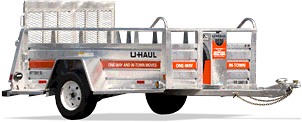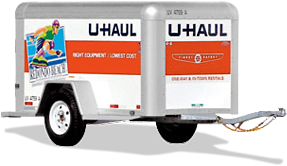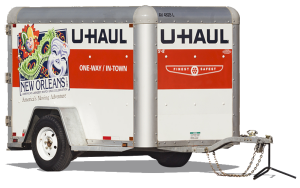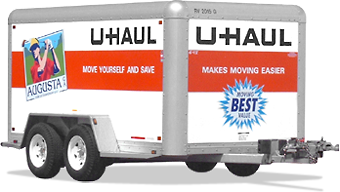I’m wondering if the load capacity is too low & affecting demand
The Cybertruck will have much higher load & towing capacity & is competitive with the Y on price, but is in a different class
When making such posting, could you provide any values?
Tesla Model Y - Tow Hitch
High strength, Class II steel tow bar.
Capable of towing up to 3,500 lbs
I checked the U-Haul web site and basically all the available trailers could be used,
however the largest trailers would have a reduced max load, see below.
4x7 Utility Trailer
Towing vehicle requirements:
Must have 1-7/8" or, 2" hitch ball (2,000 lbs. minimum)
Capacity:
1790 lbs - Max load
_630 lbs - Empty weight
2400 lbs - Gross vehicle weight
5x9 Utility Trailer
Towing vehicle requirements:
Must have 1-7/8" or, 2" hitch ball (2,000 lbs. minimum)
Capacity:
1890 lbs - Max load
1000 lbs - Empty weight
2890 lbs - Gross vehicle weight (trailer plus load):
5x9 Utility Trailer with Ramp
Towing vehicle requirements:
Must have 1-7/8" or, 2" hitch ball (2,000 lbs. minimum)
Capacity:
1650 lbs - Max load
1240 lbs - Empty weight
2890 lbs - Gross vehicle weight (trailer plus load):
6x12 Utility Trailer
Towing vehicle requirements:
Must have 1-7/8" or, 2" hitch ball (3,500 lbs. minimum)
Capacity:
2670 lbs - Max load
1730 lbs - Empty weight
4400 lbs - Gross vehicle weight (trailer plus load):
Model Y:
1770 lbs - Max load
6x12 Utility Trailer with Ramp
Towing vehicle requirements:
Must have 1-7/8" or, 2" hitch ball (3,500 lbs. minimum)
Capacity:
2110 lbs - Max load
2290 lbs - Empty weight
4400 lbs - Gross vehicle weight (trailer plus load):
Model Y:
1210 lbs - Max load
4x8 Cargo Trailer
Towing vehicle requirements:
Must have 1-7/8" or, 2" hitch ball (2,000 lbs. minimum)
Capacity:
1650 lbs - Max load
_850 lbs - Empty weight
2500 lbs - Gross vehicle weight (trailer plus load):
5x8 Cargo Trailer
Towing vehicle requirements:
Must have 1-7/8" or, 2" hitch ball (2,000 lbs. minimum)
Capacity:
1800 lbs - Max load
_900 lbs - Empty weight
2700 lbs - Gross vehicle weight (trailer plus load):
5x10 Cargo Trailer
Towing vehicle requirements:
Must have 1-7/8" or, 2" hitch ball (2,000 lbs. minimum)
Capacity:
1550 lbs - Max load
1250 lbs - Empty weight
2800 lbs - Gross vehicle weight (trailer plus load):
6x12 Cargo Trailer
Towing vehicle requirements:
Must have 1-7/8" or, 2" hitch ball (3,500 lbs. minimum)
Capacity:
2480 lbs - Max load
1920 lbs - Empty weight
4400 lbs - Gross vehicle weight (trailer plus load):
Model Y:
1580 lbs - Max load








